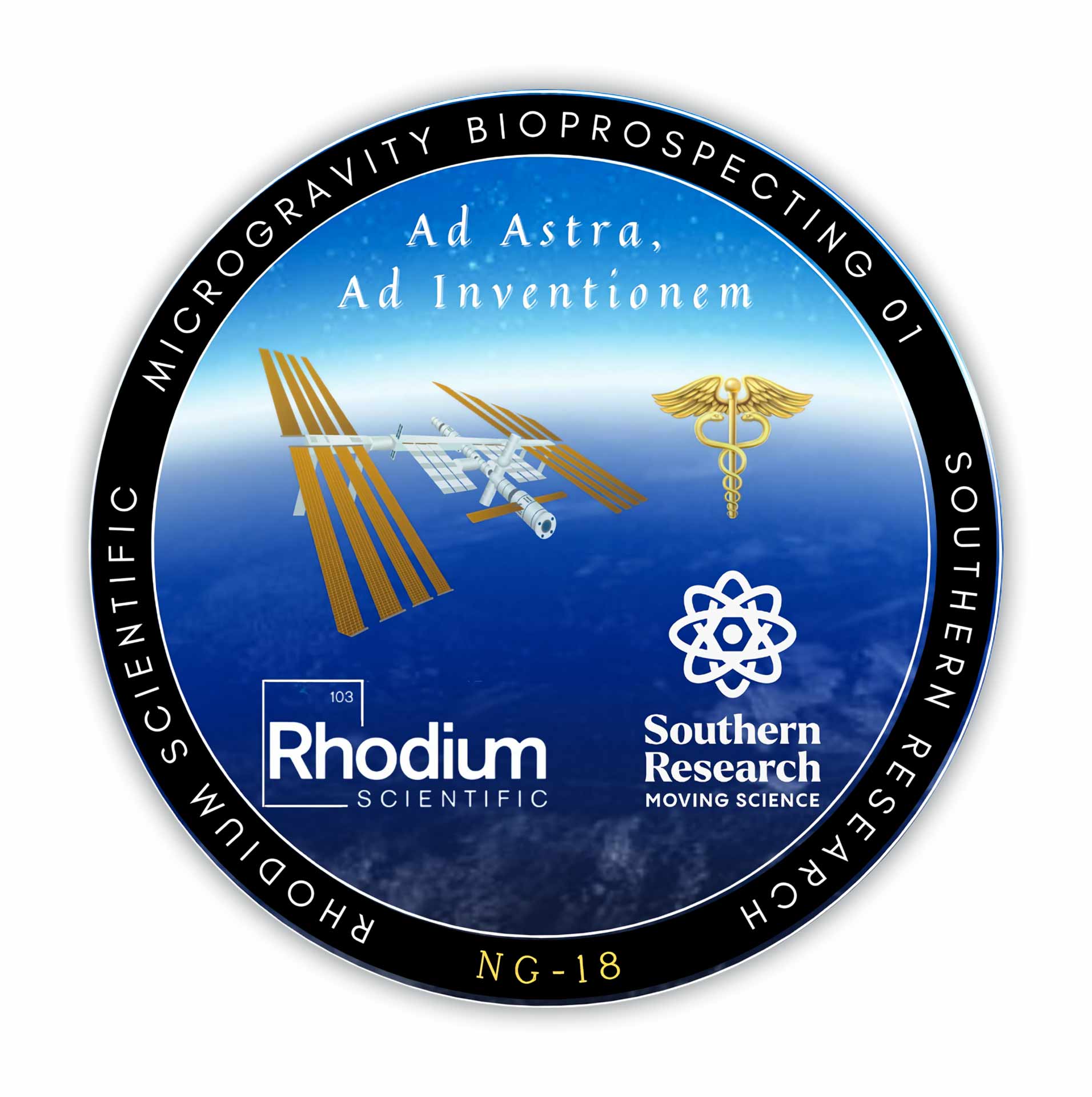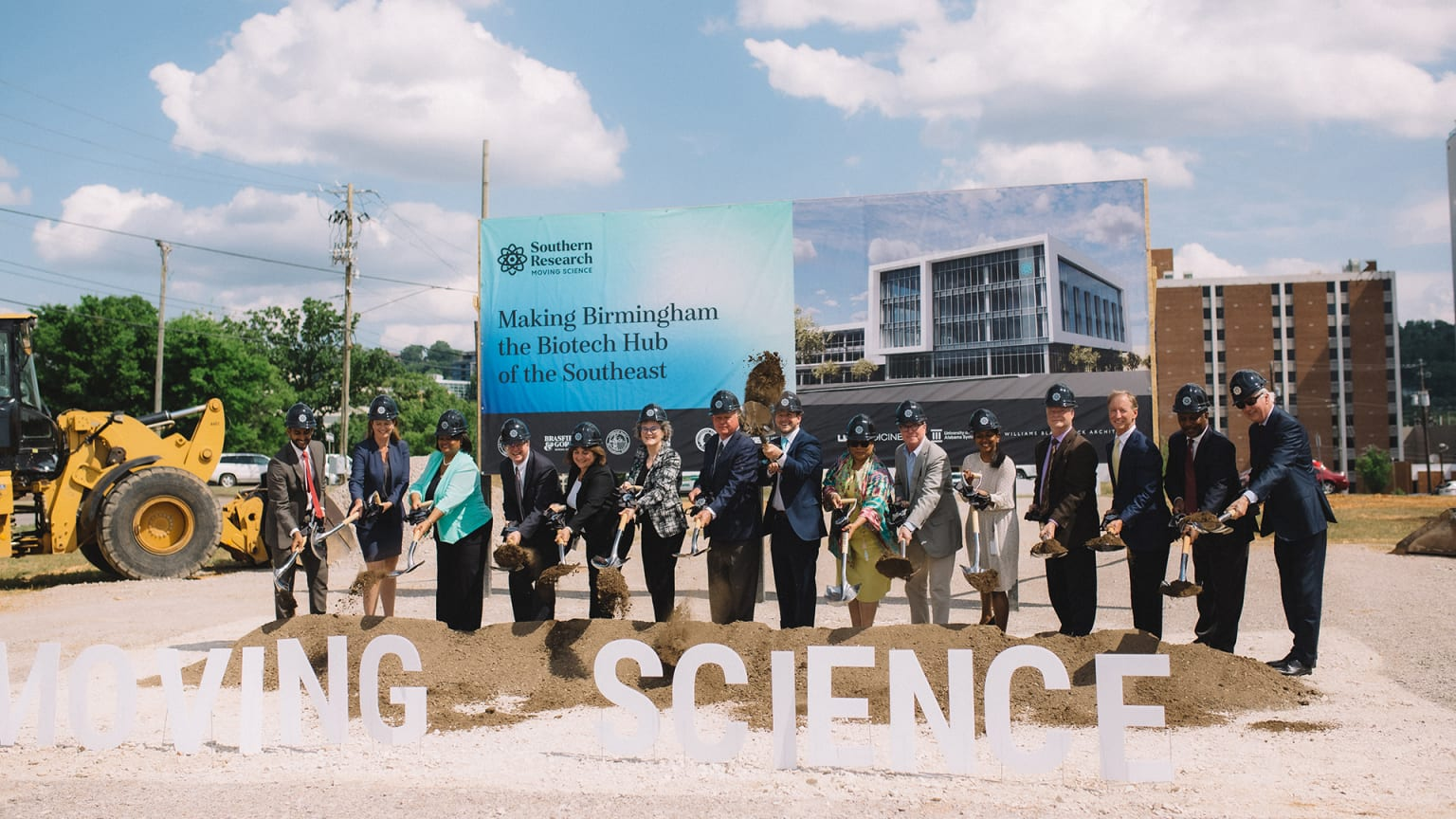Old-fashioned expertise in fiber spinning and a deep knowledge of polymers allowed Southern Research to become an accomplished pioneer in the game-changing drug-delivery technology called controlled release.
Today, a prescription medicine releasing its active ingredient over time is a familiar concept. Long-acting drugs work over the course of many weeks, eliminating the need for multiple daily doses. Implanted drug-delivery devices operate in the same way, often over several months or even longer.
Over many years, Southern Research scientists made significant discoveries in the field, laying a foundation for the development of products that have helped patients afflicted with cancer and other ailments.
Back in the early 1970s, though, controlled release was an emerging technology. It held promise in fields ranging from agriculture to consumer products and medicine, but technical advances were needed.

A conference at Birmingham’s Parliament House Hotel, organized by Southern Research, helped give the technology the push it needed in April 1973. “The Symposium on Controlled Release of Biologically Active Agents,” as it was called, attracted all the major figures working on the technology, including Dr. Allan Hoffman.
“This was a historical milestone in the controlled release field – this was the first ever meeting, and it was at Southern Research’s initiative to have this symposium,” recalled Danny Lewis, Ph.D., who then worked at the Birmingham non-profit organization.
“It was the kick-off meeting for controlled release as we know it today.”
The symposium was published in book format in 1974 and remained a key text for the field for many years.
Lewis was just one of several Southern Research scientists who would go on to to make major contributions to the field. He later served as president of the Controlled Release Society (CRS), an international professional organization that sprang a few years later from that symposium at the Parliament House.
Since top experts in controlled release technology gathered last week in Seattle for CRS’ 43rd annual meeting, it’s an ideal time to examine how Southern Research emerged as a recognized authority in the field.
MICROSPHERES
Early controlled release projects at Southern Research focused on developing an anti-fouling treatment against barnacles for Navy ships and on a pesticide to kill fire ants. The organization also worked on an antibiotic powder formulation that could be used to treat wounds on the battlefield.
A pivotal early project involved a controlled-release injectable birth control product that produced the first human testing of biodegradable microspheres, absorbed in the body over a period of six months. Lewis led the testing in Mexico City.
“Southern Research pioneered a whole field called biodegradable microcapsule delivery,” Lewis said. “To me, that will always be a key project for Southern Research in controlled release because after that we gave talks, wrote papers, and we were everywhere, left and right. People found out about Southern Research.”
Another important project involved biotech company Syntex, which wanted to use a peptide — luteinizing hormone-releasing hormone, or LHRH – in a microencapsulated form. LHRH was difficult to microencapsulate, and releasing large, water-soluble molecules like a peptide from a polymer was a challenge, but Lewis and colleague Tom Tice, Ph.D., figured out how to do it.
Two years later, in 1981, a Swiss pharmaceutical firm knocked on Southern Research’s door. The company saw promise in using microencapsulated LHRH as a treatment for prostate cancer. The product, Decapeptyl SR, first went on the market in 1986 and is still in use today.
“We became dominant in the controlled release field in those early years,” Lewis said. “We were the go-to place worldwide. We had projects here from England, Switzerland, all over.”

Lewis later left Southern Research to join Medisorb Technologies, a venture that produced biodegradable polymers and was later acquired by Alkermes. He went on to become a consultant, working with pharmaceutical companies around the world.
Other Southern Research scientists also made their marks on the field. Tice drove the microencapsulation work at the organization, while Richard Dunn, Ph.D., spearheaded work on biodegradable polymers, implants and more.
Later, Dunn, one of the inventors of a novel polymeric drug-delivery technology, licensed the approach from Southern Research and joined Atrix Laboratories in Colorado. Atrix placed a number of products on the market and ultimately was acquired by QLT.
Another Southern Research veteran, Jim English, built a reactor that Medisorb used to produce biodegradable polymers. He was later involved in the founding of Birmingham Polymers, which operated another reactor of his design.
Birmingham became home to two of the four companies in the world that operated as commercial sources for biodegradable polymers, according to Art Tipton, Ph.D., president and CEO of Southern Research, Birmingham Polymers (now part of Durect), and the Alkermes polymer business (now part of Evonik). Both still operate in Birmimgham.
“Southern Research played a seminal part in the start of a very important field,” Tipton said. “The controlled release work done at Southern Research was based on strong science capabilities. It was a very vibrant group and the members were catalytic in the field.”
Other interesting Southern Research projects in controlled release included the development of a microparticle vaccine to protect soldiers against biological attacks and two Space Shuttle flights that tested the effects of microgravity on antibiotic microspheres.
SPINNING A VENTURE
Tipton, who worked at Southern Research in the early 1980s before heading off to graduate school, joined Dunn’s Atrix before returning to Birmingham to play a key role in Southern Research’s drug-delivery business.
In 2005, the non-profit organization formed Brookwood Pharmaceuticals as a commercial venture for its controlled release group, which included the manufacturing of biodegradable polymers. Tipton headed the business, which quickly attracted a suitor as revenues rose.
Brookwood was snapped up in 2007 by SurModics Inc. in a deal valued at $50 million – the largest commercial transaction in Southern Research’s history. (Germany’s Evonik later acquired the business, and Tice still works in the Birmingham operation.)

Like Lewis, Tipton has served as president of the Controlled Release Society, meaning Southern Research has produced two leaders of the worldwide professional organization.
Lewis noted that the roots of Southern Research’s work in the field actually stretch back to the 1960s and the work done in the organization’s Plastics and Fibers section. Experts there developed the ability to produce fibers that easily degraded during the spinning process.
This technique was adopted to make the first synthetic, absorbable sutures – a major advance. It also introduced Southern Research scientists to the polymers that would become the cornerstone of the organization’s controlled release work.
“Polymers were absolutely fundamental to drug delivery. We realized early on that if we were going to do all these things in drug delivery, we had to be basic in the polymers because there was nowhere to buy them,” Tipton said. “We’ve got to make them using commercial standards and with quality standards so that the FDA will approve them.
“There was just an incredible expertise here to do that.”



